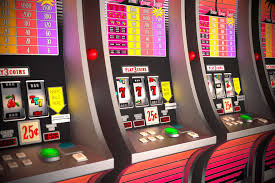Slot Machine Gameplay have become an iconic element of modern gambling, easily recognized by their spinning reels, colorful symbols, and the unmistakable sound of a jackpot win. But long before the digital age brought slots to smartphones and computers, their origins were rooted in mechanical ingenuity and cultural fascination. Understanding the dawn of slot machine gameplay offers valuable insight into how these games evolved into the billion dollar industry they are today.
This article explores the history, innovation, and social impact of the earliest slot machines and how they laid the foundation for the games enjoyed by millions around the world today.
1. The Birth of the Slot Machine Gameplay Concept
The origins of slot machines can be traced back to the late 19th century. In 1891, a New York-based company, Sittman and Pitt, developed a gambling machine that used five drums to simulate poker hands. It featured 50 playing cards and required a nickel to play. Players would pull a lever, and the drums would spin, aiming to align a winning poker hand.
While the machine did not have a payout mechanism prizes were usually offered by the establishment (such as drinks or cigars) — it became incredibly popular in bars and clubs. This laid the groundwork for the concept of automated gambling.
2. Charles Fey and the Liberty Bell Slot Machine Gameplay
The true dawn of slot machine gameplay came in 1895, when Charles Fey, a mechanic based in San Francisco, created what is widely considered the first true slot machine: the Liberty Bell.
This machine simplified the design of earlier poker-based machines by using three spinning reels and five symbols: horseshoes, diamonds, spades, hearts, and the Liberty Bell. The introduction of reels allowed for automated payouts, with the highest prize awarded for three Liberty Bells in a row hence the machine’s name.
Fey’s innovation made the game faster, more exciting, and more accessible to the general public. Its simplicity and mechanical elegance marked the beginning of slot machine gameplay as we know it.
3. Growing Popularity and Early Regulation Slot Machine Gameplay
Following the success of the Liberty Bell, slot machines began to appear in saloons, cigar shops, and casinos across the United States. Manufacturers quickly copied and modified Fey’s design, introducing variations that included fruit symbols and gum based prizes a move that helped slot machines circumvent anti-gambling laws.
In the early 20th century, legal restrictions on gambling led to significant changes in how slot machines operated. Many were marketed as “trade stimulators”, offering non-monetary prizes to avoid legal scrutiny. This period of regulation forced innovation and helped slot machines become even more embedded in popular culture.
4. The Electromechanical Revolution Slot Machine Gameplay
Slot machine gameplay underwent a major transformation in 1963 with the introduction of the first fully electromechanical slot machine by Bally, called “Money Honey.” While earlier machines had incorporated some electrical components, Money Honey was the first to operate entirely without mechanical springs.
The machine featured a bottomless hopper and automatic payouts of up to 500 coins. This breakthrough allowed for higher stakes, more exciting gameplay, and paved the way for the modern casino environment.
Electromechanical slots also introduced new features like lights, sound effects, and multiple paylines, increasing player engagement and shaping the immersive experience players expect today.
5. The Digital Era and Online Expansion Slot Machine Gameplay
The next major evolution occurred in the 1990s, when slot machines transitioned from electromechanical devices to fully digital video slots. These machines used screens instead of physical reels and incorporated advanced graphics, animations, and bonus features.
With the rise of the internet, online slot games emerged, allowing players to spin the reels from the comfort of their homes. Today, online slots dominate the global gambling market, offering thousands of game variations with diverse themes, progressive jackpots, and interactive bonus rounds.
The evolution didn’t stop there. The rise of mobile gaming and social casino apps has made slot gameplay more accessible than ever before, reaching a new generation of players across the world.
6. A Lasting Legacy Slot Machine Gameplay
From mechanical beginnings to digital dominance, the history of slot machines reflects broader technological, cultural, and economic trends. What began as a simple gambling device has transformed into a complex entertainment platform, blending design, psychology, and technology.
Modern slot machines are now developed with careful attention to game mechanics, player engagement, and responsible gaming features. Despite these advancements, they still carry the legacy of Charles Fey’s Liberty Bell and the countless innovations that followed.
The dawn of slot machine gameplay marked the beginning of an extraordinary journey that continues to evolve with each technological leap. From mechanical levers to virtual reels, the slot machine has not only survived the test of time but has thrived by continuously adapting to player preferences and market demands.
As the industry moves into the future djarumtoto slot with virtual reality, blockchain integration, and AI driven game design, the origins of slot gameplay serve as a reminder of how far we’ve come and how much potential still lies ahead.


Tinggalkan Balasan